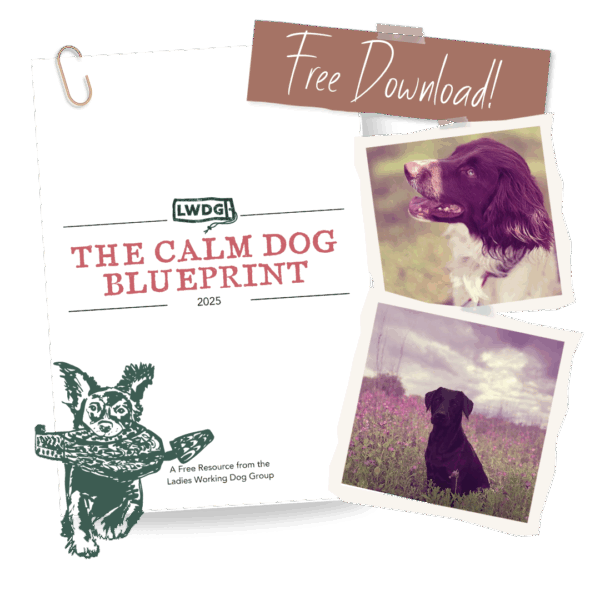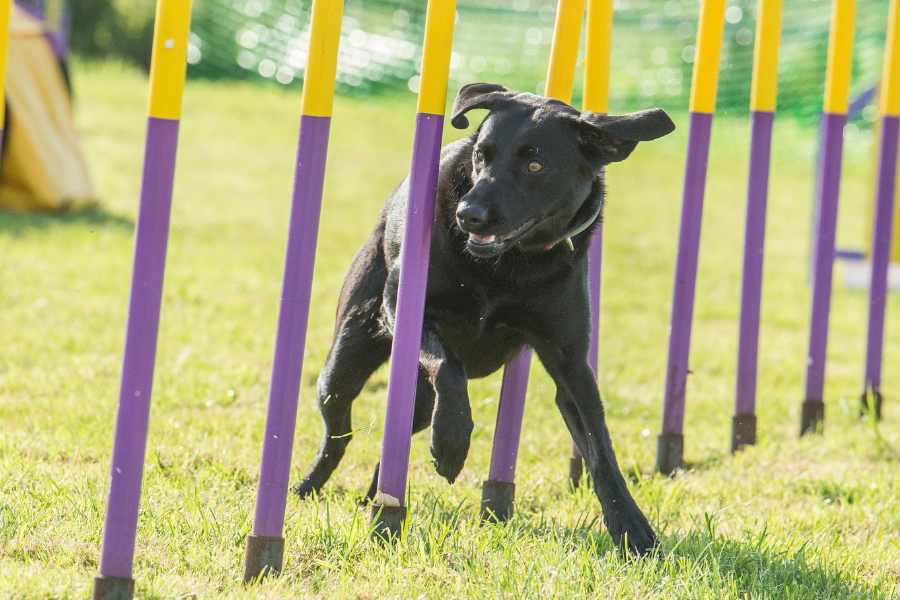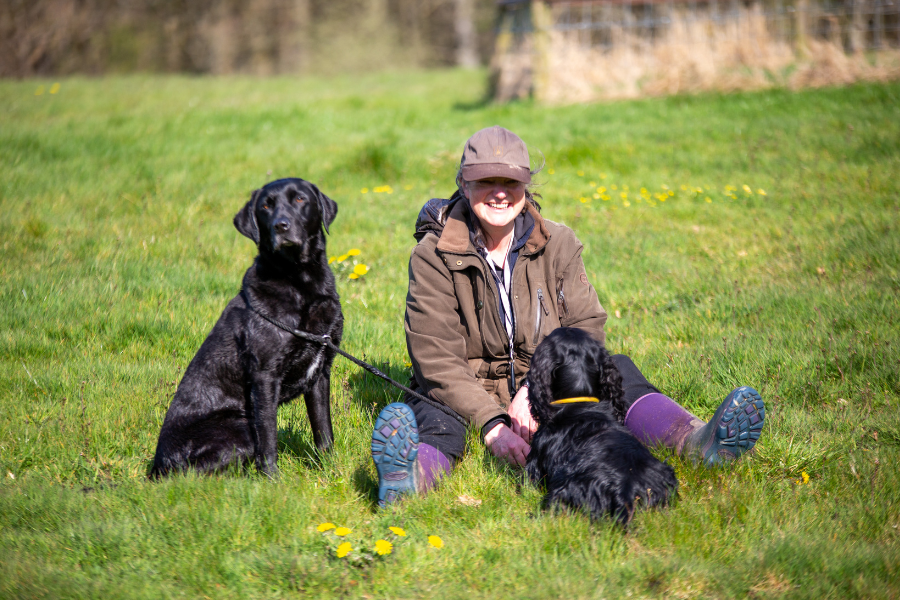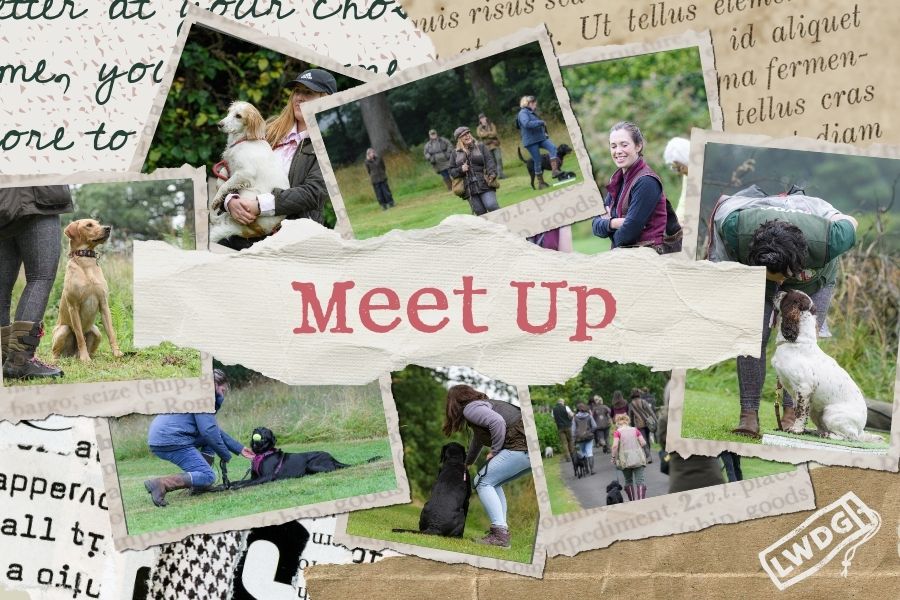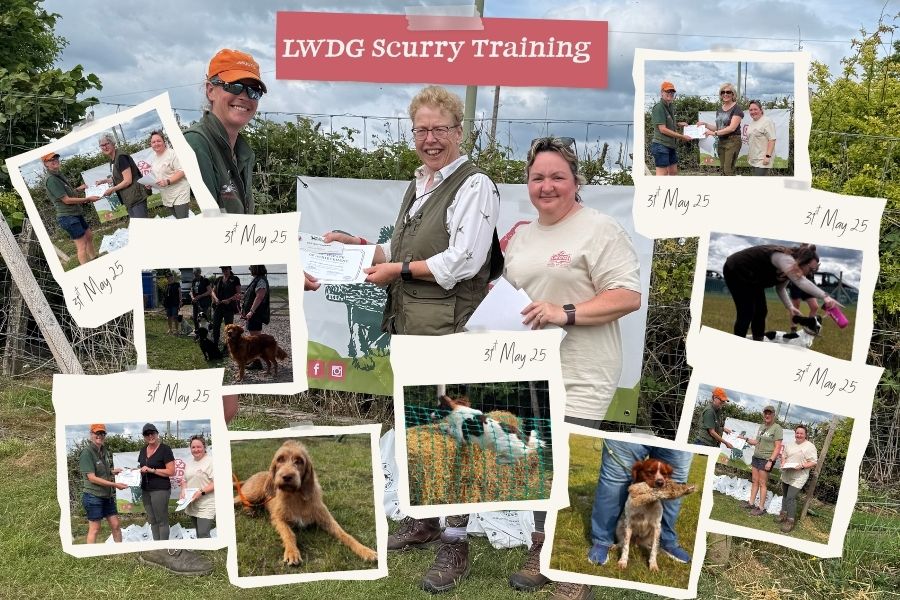Why Force Free Fails High Drive Dogs
There is a moment every dog owner recognises, where you look at your pup doing something utterly ridiculous and you think what on earth possessed you to do that.
Arthur eating the cork doormat like it was a Michelin star snack, Genie deciding that strangers were obviously made of danger, Rex flat out in front of the fire pretending he is the picture of innocence.
Every dog has their thing. And every owner has had that moment of wondering am I doing this wrong because I told my dog no.
If you have ever felt that tiny stab of guilt for correcting your dog this one is for you.
Because the truth is this. Force free sounds lovely on paper but it crumbles the minute you bring home a high drive working breed. The minute your dog meets real life. And the minute they start making their own decisions that put themselves or you at risk.
And before we dive in let us get one thing clear. None of this is about harshness. None of this is about fear. None of this is about going backwards to old school hard handed training.
This is about real life dogs real women and the real world you both live in.
Everything in this blog is taken from the conversation with LWDG Group Expert Claire Denyer on episode 193 of Found It Fetched It.
Where the force free myth begins
Force free says you must never apply any physical pressure never interrupt a behaviour never use a verbal correction and never do anything the dog might find aversive. It is a wonderful idea in theory. It is also entirely impossible from the minute a puppy is born.
A breeder puts boundaries in from day one.
Mum sets boundaries from day one.
Life sets boundaries from day one.
Puppies are licked shoved nudged and corrected by their mother long before they ever meet a human. They are handled chipped weighed wormed and vaccinated by people long before they come home. They learn pressure before they understand anything else. They learn that the world is full of experiences they may not love but must tolerate. It is normal. It is natural. And it is necessary.
So the idea that your eight week old pup should suddenly be raised in a world where nothing feels uncomfortable nothing is interrupted and nothing is guided is not just unrealistic it is unkind.
These dogs arrive in our homes already shaped by rules they did not choose. And thank goodness for that because boundaries are part of how they survive.
Why high drive dogs need direction more than anything
If you own a working Cocker Spaniel a Labrador an HPR or any dog bred to hunt or retrieve then you already know the truth. These dogs are wired for action. They come out the womb with opinions. And left to their own devices they will run their own show and it will not be a show you enjoy watching.
Claire said it perfectly during our conversation. When dogs are given no structure no rules and no guidance they end up either anxious confused reactive overexcited or simply running wild. And it is not their fault. If we do not step in to steady them they will try to steady themselves and that usually comes out sideways.
We are not trying to dominate our dogs. We are not trying to squash their spirit. We are trying to help them live safely and sanely in a world that does not understand what high drive actually means.
And if you have ever met a high drive dog raised with no boundaries you know exactly what that looks like. Dogs biting owners. Dogs refusing to be handled. Dogs who cannot be groomed muzzled collared or examined at the vet. Dogs who cannot leave the house because their arousal is so high they cannot cope. Dogs who scatter feed for two years because a trainer told the owner that anything more exciting was too much pressure.
These are not dogs who have been treated kindly. These are dogs who have been left without leadership.
Kindness is not the same as permissiveness
Every good dog owner leads with kindness. Of course we do. These animals are our hearts with legs. But kindness without boundaries becomes permissiveness. And permissiveness creates uncertainty. And uncertainty fuels unwanted behaviour.
Arthur putting his paws on the sofa is not a tragedy. But if I never said no he would be on my head within a week. If I never redirected him he would believe the sofa was his rightful throne. If I never taught him how to switch off he would still be doing laps of the living room at 10pm.
Kindness is me gently putting my hand on his collar and guiding him down.
Permissiveness is letting him practise behaviours that will make his life harder later on.
A dog who cannot settle is not happy.
A dog who cannot cope with being held is not happy.
A dog who cannot be examined by a vet is not safe.
A dog who makes all the choices is not free. They are overwhelmed.
Why never say no harms the relationship not helps it
One of the biggest myths pushed by extreme force free voices is that telling your dog no will damage the bond. That corrections make you unsafe. That boundaries weaken trust.
This simply is not true.
The only thing that ruins trust is fear or pain. Not guidance. Not structure. Not a calm ah ah to interrupt a behaviour. Not a slip lead teaching a dog how to move with pressure rather than fight it.
Your dog does not need perfection. They need clarity. They need to know what is allowed and what is not. They need to know you will steady them when they wobble. They need to know you will step in so they do not have to escalate.
If you have ever worked with dogs who were raised with zero boundaries you will know exactly what we mean. These are not confident dogs. These are dogs spiralling. Because when nobody leads they must lead. And leading terrifies them.
The myth of the force free miracle
Let us circle back to the definition one more time. According to force free extremism you must never interrupt a choice. Never apply pressure. Never say no. Never do anything the dog dislikes.
And yet these same trainers will proudly show a perfectly behaved dog and say look we did it all without correction. We shaped everything. We never said no.
I call absolute nonsense.
If you have high drive gun dogs in your life you know it is impossible to achieve real world steadiness without stepping in. You know it is impossible to teach safe behaviour without interrupting dangerous choices. You know you must meet a dog’s nature not pretend it is not there.
If you have ever tried to stop a spaniel chasing a pheasant with positive reinforcement only you already know how that ends.
What real kindness looks like
Real kindness is not refusing to say no.
Real kindness is teaching your dog how to cope with pressure before the world throws pressure at them.
Real kindness is helping them feel safe in your leadership.
Real kindness is creating a dog who can settle in front of the fire, handle the excitement of a shoot, stay grounded during fireworks, and trust you to guide them through the messy bits of life.
Real kindness is what Claire did with the spaniel who had not left the garden for two years. She used gentle correction to bring his arousal down, structured play to build connection, and boundaries to teach him how to cope again. Now that dog is walking on a slip lead, taking food calmly, and soon coming to her field for a proper session. That dog has a life again. That is kindness.
The question every owner must ask
When you are training your dog ask yourself this one simple thing
Am I being kind or am I being permissive.
Because those two things feel similar in the moment but lead to very different futures.
A kind owner steps in
A permissive owner steps back
A kind owner says no when it matters
A permissive owner hopes the dog will figure it out
A kind owner sets boundaries
A permissive owner lets the dog carry the weight of all the decisions
One of these produces a steady dog who feels safe
The other produces a dog who feels lost and overwhelmed
Trust yourself more than the labels
This is the heart of it. Trust your instinct. Trust what you can see in front of you. Trust that stepping in does not make you harsh. Trust that guiding your dog makes you the safe place they need. Trust that real life dog training is messy funny frustrating and deeply rewarding all at once.
High drive dogs need steady women.
Steady women need confidence not labels.
And you already know far more than you think.
If this blog has made you exhale and think so I am not doing it wrong then good. You are allowed to guide your dog. You are allowed to interrupt poor choices. You are allowed to say no with love. You are allowed to create boundaries that protect your wellbeing and theirs.
Force free sounds gentle but without leadership it creates chaos.
Real kindness sounds firm sometimes but it creates safety.
And safety is the most loving thing you can ever give a dog.

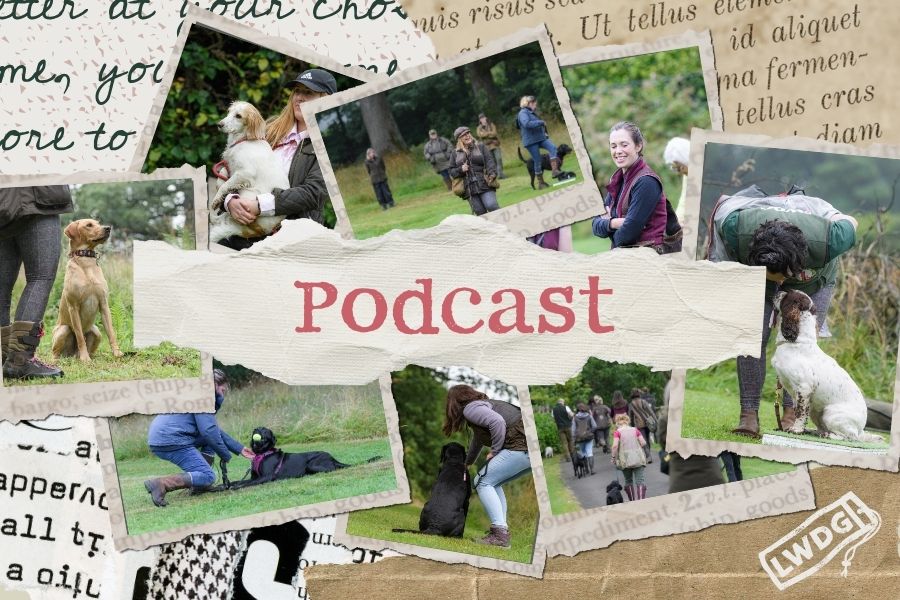

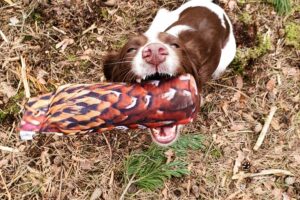
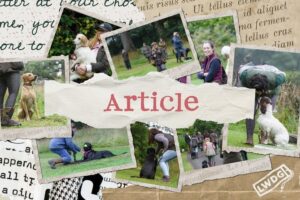
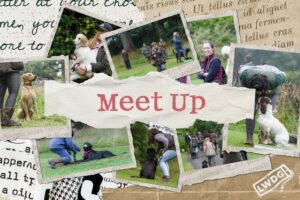
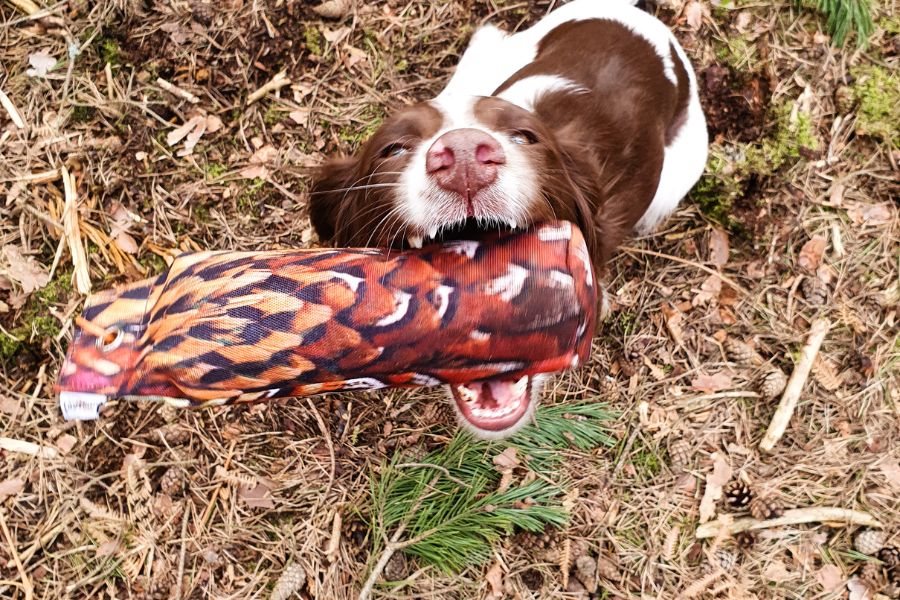
 If you’re nodding along, you’re not alone – many of us gundog owners have been there. Gundogs (like Labradors, Spaniels, Retrievers, and their kin) seem born to carry stuff, from toys and training dummies to the random shoe they swear you left out just for them. It’s a quirky, often endearing habit that can leave us scratching our heads. Why on earth do they love this so much?
If you’re nodding along, you’re not alone – many of us gundog owners have been there. Gundogs (like Labradors, Spaniels, Retrievers, and their kin) seem born to carry stuff, from toys and training dummies to the random shoe they swear you left out just for them. It’s a quirky, often endearing habit that can leave us scratching our heads. Why on earth do they love this so much? From puppyhood, many dogs figure out that if they grab a forbidden item (sock, TV remote, the odd underwear from the laundry basket), suddenly all eyes are on them. You laugh, you chase them around, you drop what you’re doing – mission accomplished!
From puppyhood, many dogs figure out that if they grab a forbidden item (sock, TV remote, the odd underwear from the laundry basket), suddenly all eyes are on them. You laugh, you chase them around, you drop what you’re doing – mission accomplished!




